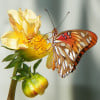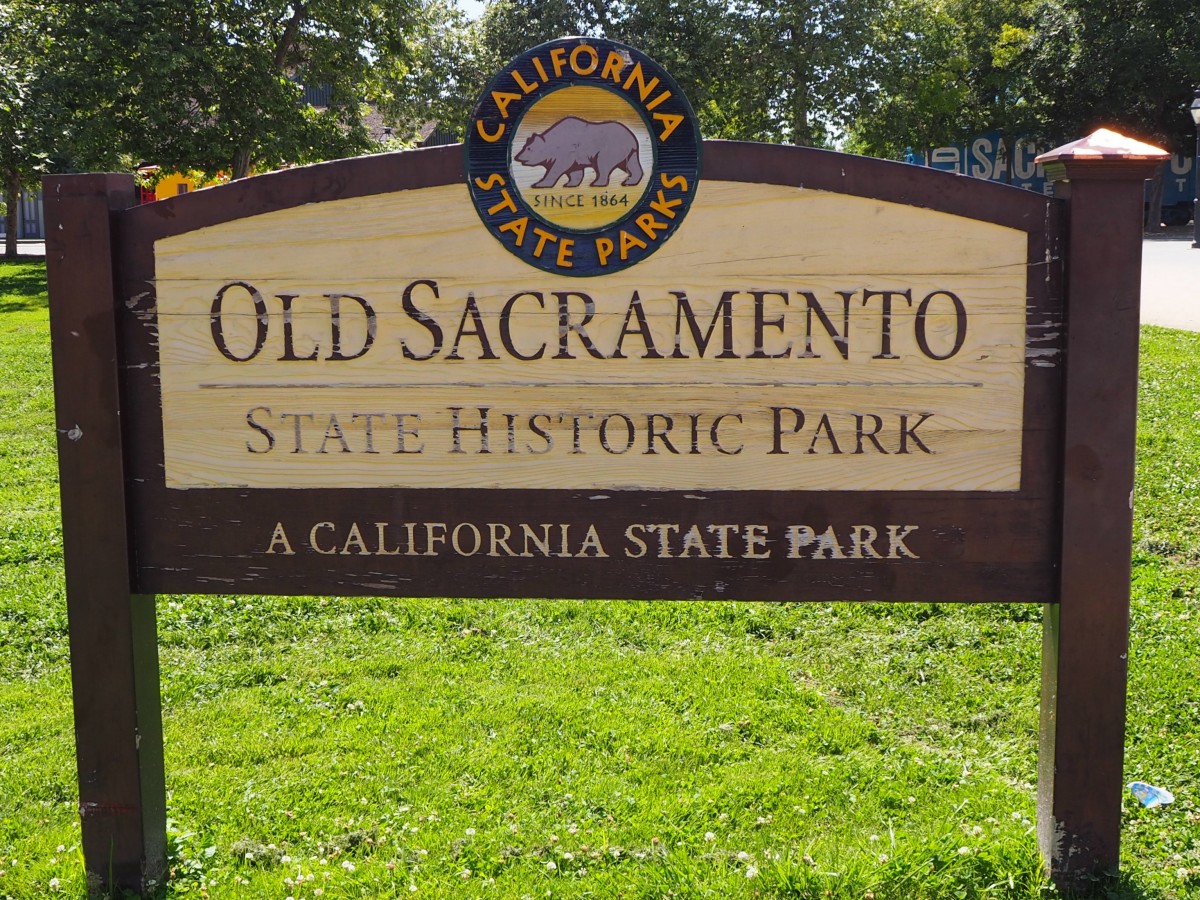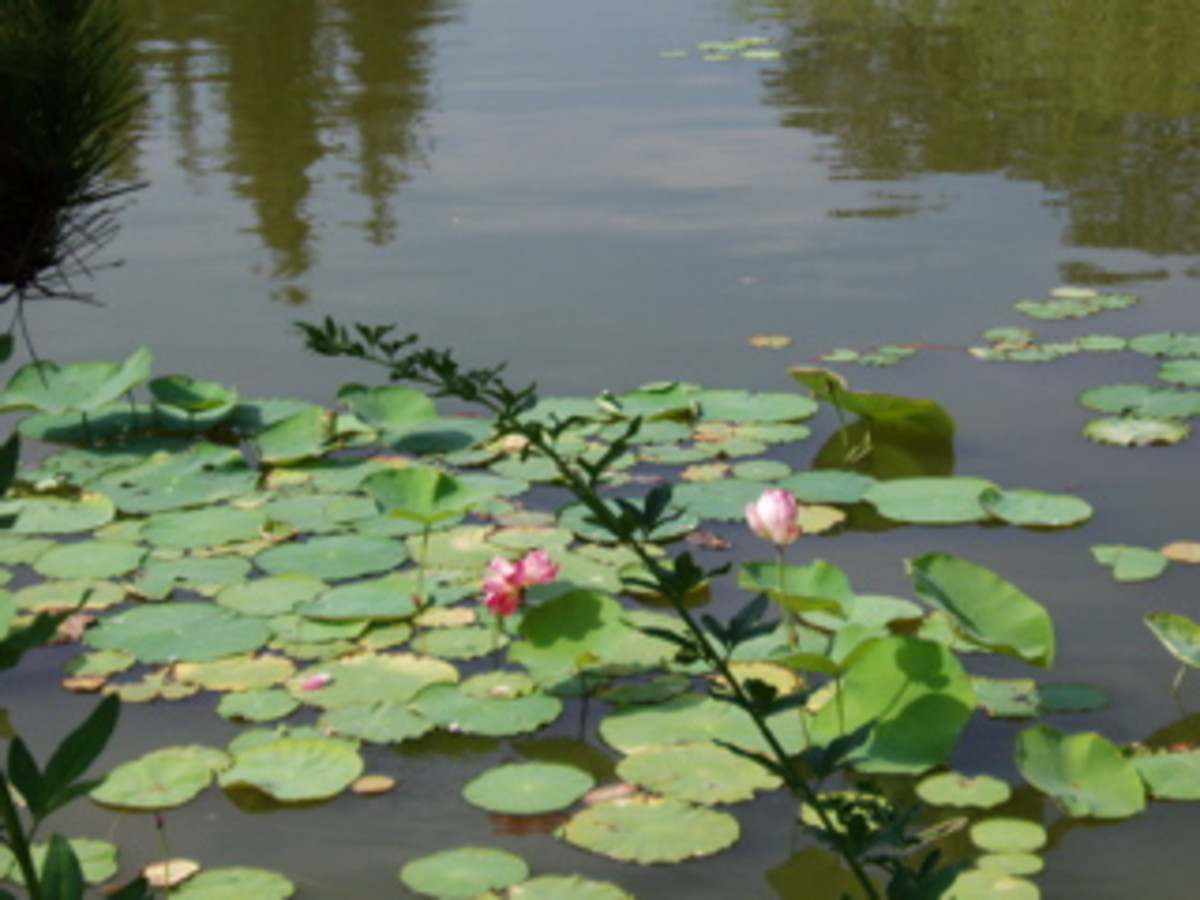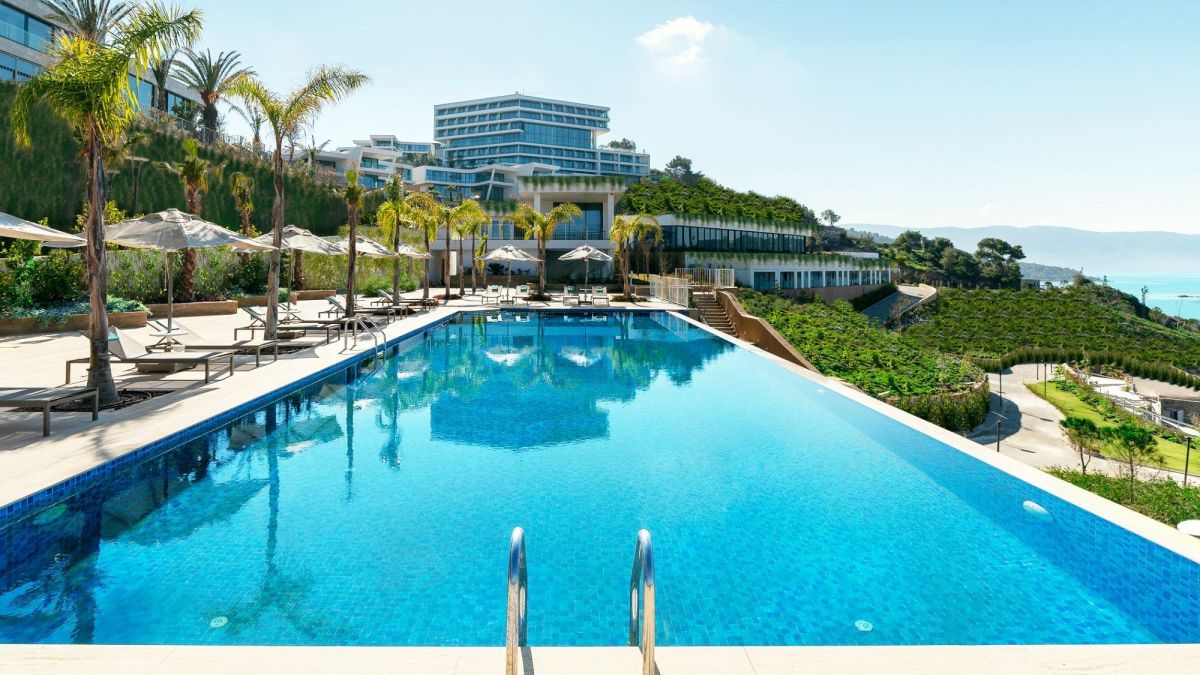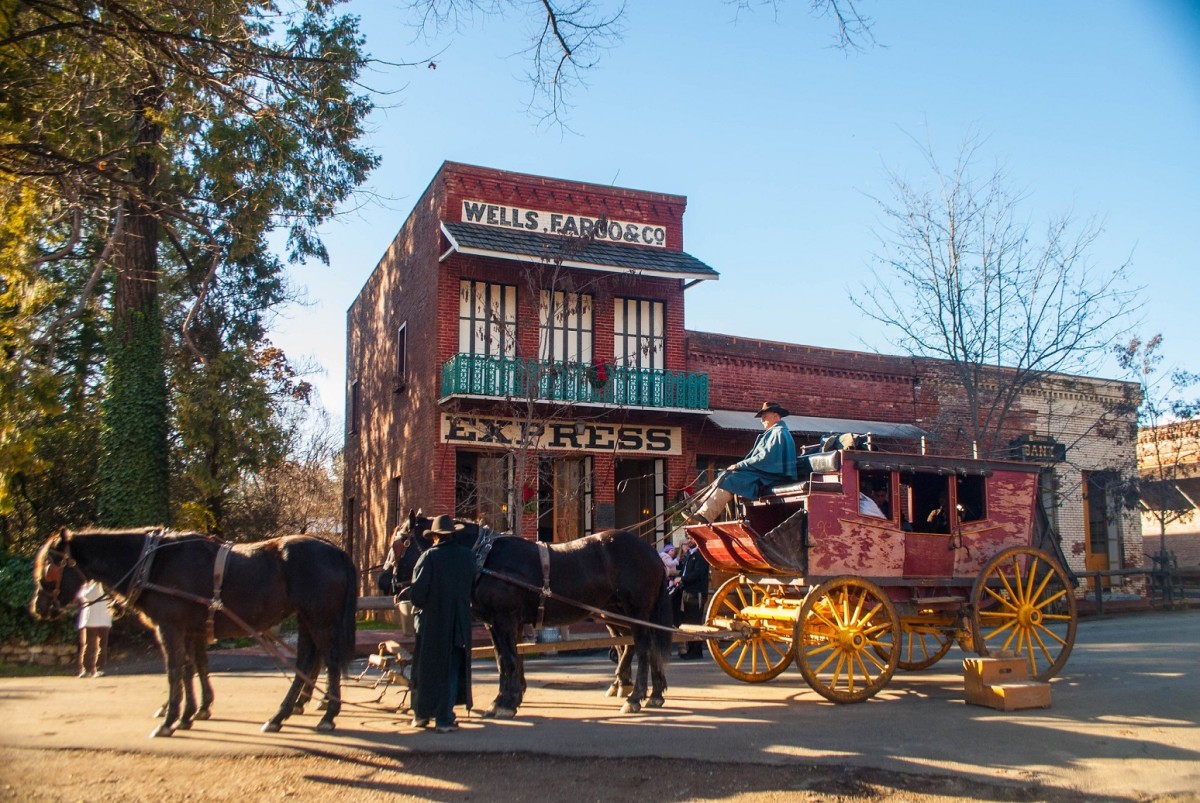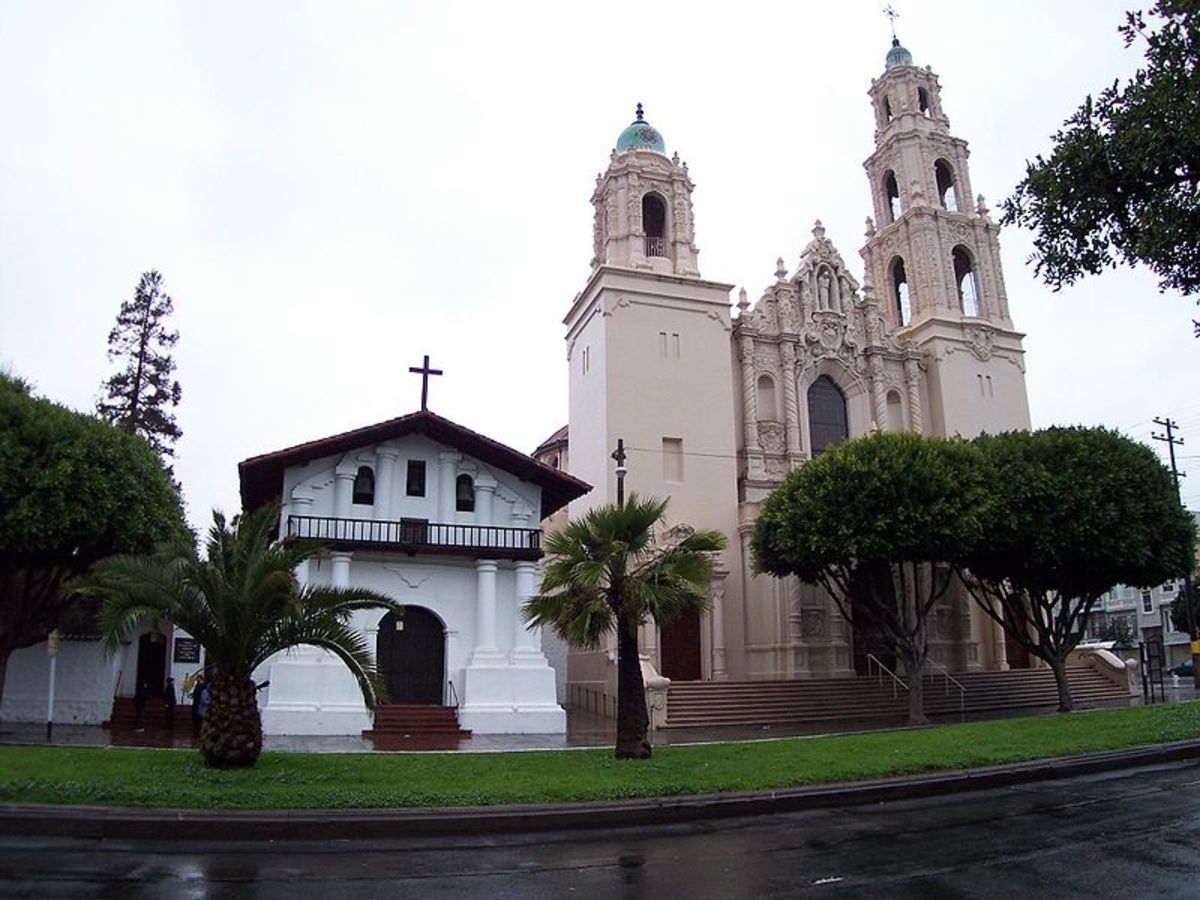- HubPages»
- Travel and Places»
- Visiting North America»
- United States»
- California
Visiting Jepson Prairie - Dixon California
Entrance and picnic area
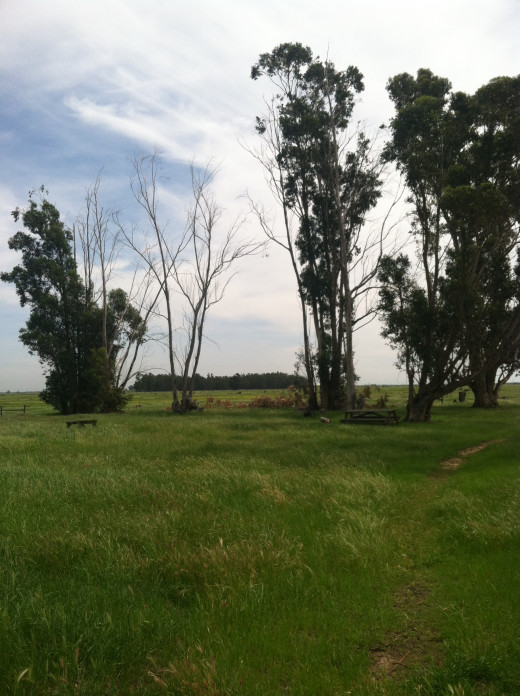
Brodiaea
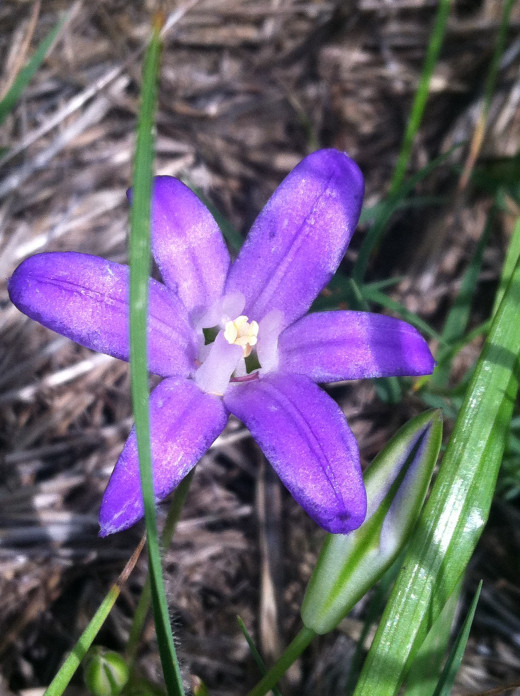
Meadowfoam

An Introduction to Jepson Prairie Preserve
Jepson Prairie is a fragment of what was once an outstanding natural heritage. Like many things in nature, man did not see the value in what the land had naturally created. Instead, we saw farmland, land for agriculture, and land to house our growing population. It is still much that way today, though places like Jepson Prairie are helping to not only preserve, but also to educate.
There are no award winning rose gardens here. There are no laboratory hybrids in the latest fashionable colors. In fact, if you were to look out across the prairie in summer, you would just see open land and some mud holes. Maybe the grass would be green or maybe it would be brown. In the spring what you would see is a kaleidoscope of color that paints the landscape like a stained glass window. It is the color that people cannot believe, and I certainly encourage you to make the journey to see this place when it is full bloom.
Jepson Prairie is part of the UC Natural Reserve System, and it is home to 400 plus species of plants that are composed of 64 families and 15 or more rare species (1.) This is a place of where vernal pools abound. This is also a place where one can look into the past and see what California was like, before urban sprawl, agriculture and ranching changed the landscape. There is a story that the land tells, and I would like to attempt to tell you that story.
Vernal pools
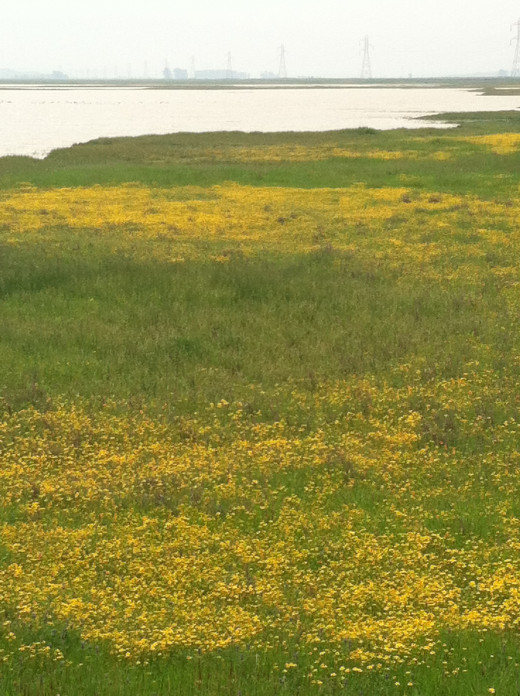
Mimulus or Monkeyflower
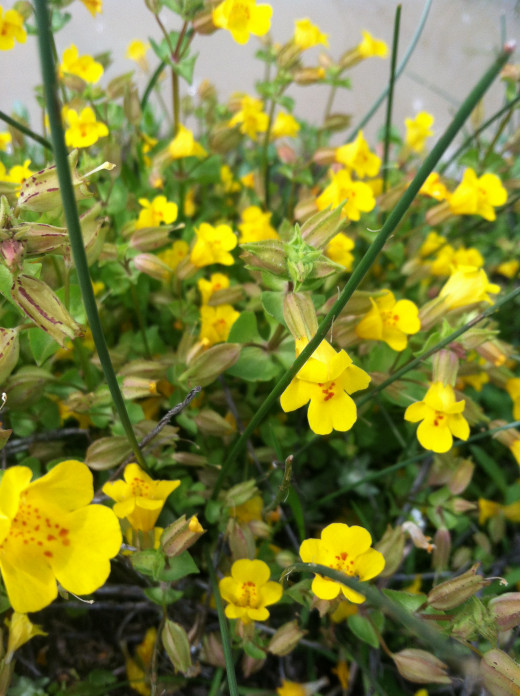
Viola
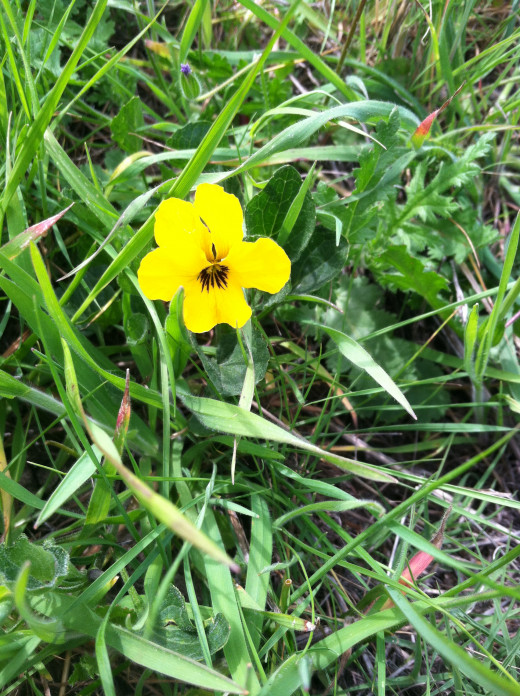
The Ecology of Vernal Pools
To be honest with you, I have only been here once. It was enough for me to recognize the importance of places like Jepson Prairie. Here the story that the earth tells is remarkably like a song. It is very much tied to the seasons. The voices are the plants. The plants are the splendor that draw you in and forever change you.
To begin, this is a place of quiet turmoil and seasonal extremes. We tend to think of the word "turmoil" as something that is loud and obnoxious, but here it is quiet, and subtle because time here moves faster than we humans are used to it moving. Some flowers may bloom in a single day and be gone the next. There is constant change even though to our eye the place looks static. The plants and animals and smaller organisms that live here must adapt to the consistency of change. It does not matter on what week you visit, the song that is sung is ongoing. If you have come to see the flowers, and you should, early spring is a great time to visit.
The remarkableness of Jepson Prairie is two-fold. One is the native bunchgrass prairie and the other is its selection of vernal pools. This article mostly focuses on the vernal pools. Vernal pools are rare in the world. They form primarily in areas where there is a Mediterranean climate (2.) Vernal pools are wetlands that are seasonal, and dependent upon rainfall for filling. The word seasonal is important because it encompasses the life-cycle of a vernal pool. What many people do not understand about vernal pool ecology is that the plants and organisms that grow in vernal pools do not usually grow outside of the pool.
We are not just looking at a mudhole we are looking at a very specific and specialized habitat. In Biology and Botany we refer to vernal pools as island habitats. Like an island in the middle of the ocean, vernal pools are smaller habitats that are surrounded by a larger habitat. The two are different despite their proximity. The soil in the vernal pool may be very acidic or alkaline in comparison to soil that is just outside of the pool. The plants and animals that live in the pool are adapted to the pH of the pool. That is why these little ecosystems are so important. They contain life that does not exist elsewhere. They contain resources that we humans cannot recreate. The soil in vernal pools is old. Estimates place the lower terrace vernal pool soil age around 10,000 years old (3)
Meadowfoam - L douglasii var. rosia
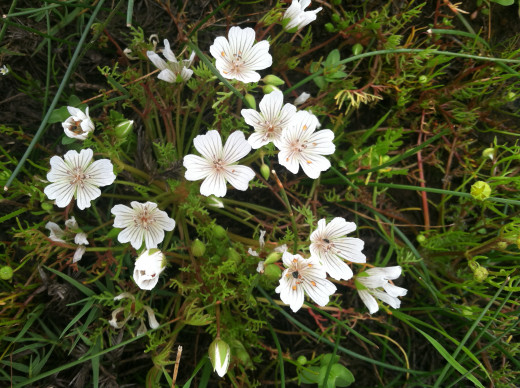
Mimulus gluttatus
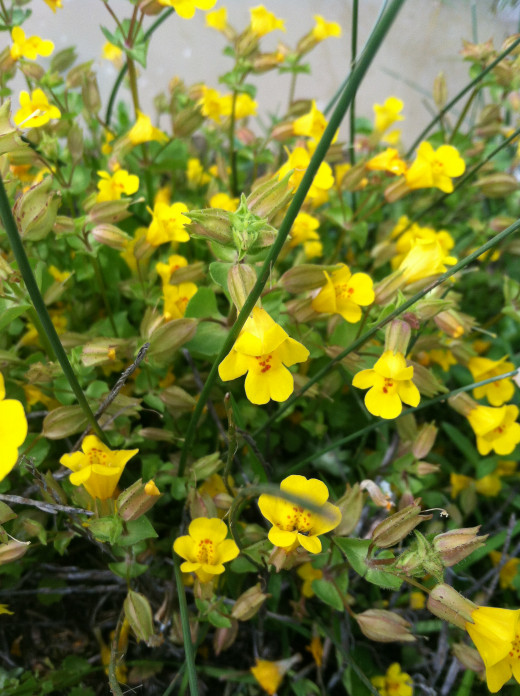
Mimulus kelloggii Kellogg's monkey flower

What is a Vernal Pool?
There are so many things that a vernal pool can be. They are seasonal wetland that occur because of a depression in the soil. In volcanic regions, the depression is in the lava field rather than in the soil. Over the course of hundreds and thousands of years the soil contents within the depression reaches a state where it sustains a very specific group of organisms. These plants and animals have gone through generation after generation of natural selection to the point that their genetic code may alter from that of their ancestors. This is one way that a new species is formed. When you are talking about a unique environment, and the confines of a vernal pool is a unique environment, then all of the organism that reside in that pool may also be unique themselves.
A vernal pool is referred to as an Island Ecosystem. This is because of how the soil inside the vernal pool has changed from the soil that is outside of the vernal pool. You would think that the matter of a foot would make the soil the same. It does not. Vernal pools at Jepson Prairie are lined with ancient clay that when dry is called a hard-pan. Water does not flow through it, or if it does it seeps at a microscopic rate. The clay is what causes the water to pool in the depression. It is also why there pools are rare. Because of the hard-pan lining, water that fills the pool must come from rainfall. In some instances, when it rains so much that the pools overflow, swales can transport water from one pool to another. The nutritional content of the pool is dependent upon what the wind blows in, and the decomposing plant and animal material from one wet season to the next. These are self-sustaining environments. They are almost their own organism.
In short, these are seasonal wetlands of a smallish nature, which are unique, special and rare. They are the home of some rather important and unique forms of life.
Driving Directions
For Directions and further information about this site, please visit the Solano County Land Trust webpage. This preserve did not show up on Google Maps. Driving directions are in the link below:
Solano County Land Trust Driving Directions to Jepson Prairie
It is an easy drive of about ten miles once you get to the city of Dixon. This is also an excellent spot for an outdoor lunch. It is quite, the scenery is lovely, and there are picnic tables available. Be sure to take your garbage home with you.
Fremont's goldfields
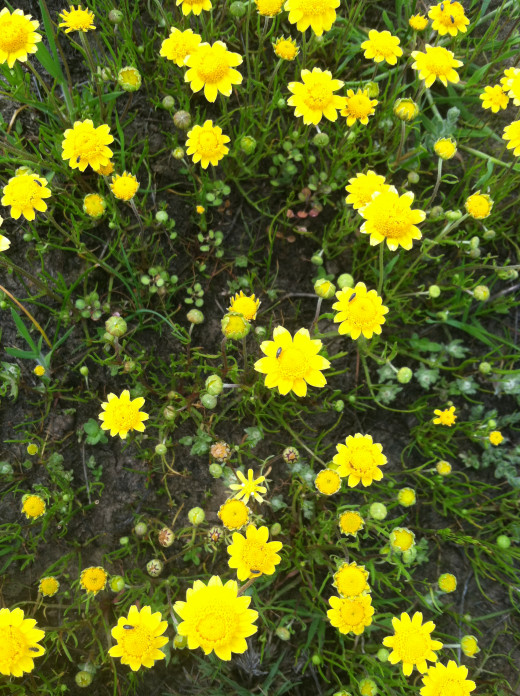
What to Bring
- Wear layered clothing and bring a windbreaker. It can get breezy here.
- Good shoes that you don't mind getting dirty. Day hikers work well.
- Binoculars - You may have an outstanding opportunity to view birds and wildlife.
- A field guide for flower identification if that interests you.
- A camera.
- Water and lunch.
- A notebook. Journaling is an awesome way to experience a place.
- A hand lens is is a good idea too. Many of the flowers that you will see are tiny. They are also beautiful and delicate.
Fields of Discovery
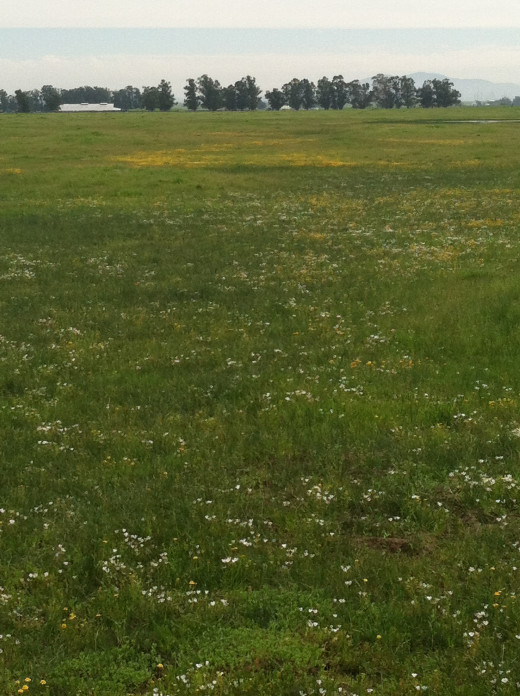
What not to Bring
- Don't bring your dog or other pets.
- Don't bring trash you are not prepared to take home.
- Don't bring clothes that you don't want to get dirty. Sometimes lying on your stomach is the best way to view plants in a vernal pool.
Wildflowers of California
Birds of California
The Amazingly Wild Sights We Miss Every day.
Besides the beautiful flowers, vernal pools offer a host of other exciting creatures. These include fairy shrimp, tadpole shrimp, frogs, tiger salamanders, and even aquatic insects such as diving beetles. Outside of the pool you will likely see birds such as egrets, American Avocet, geese and the black-bellied Plover. iNaturalist.org has an outstanding checklist of plants and animals with awesome photographs.
When you visit, come prepared to look at things closely and far away. A hand lens helps to enjoy the splendors of the smaller flowers. These little plants are often quite spectacular. There are plenty of small insects that are quite lovely too. Metallic green Halictid bees, metallic beetles, and of course, where you find flowers you might also find butterflies. The bird life should be outstanding too. Olcott lake attracts marsh birds and waterfowl, especially during migration seasons. Mammals are also present. You may get lucky and see a fox hunting. The birds of prey are also exciting. A pair of binoculars will enable you to enjoy the birds and mammals.
Olcott lake
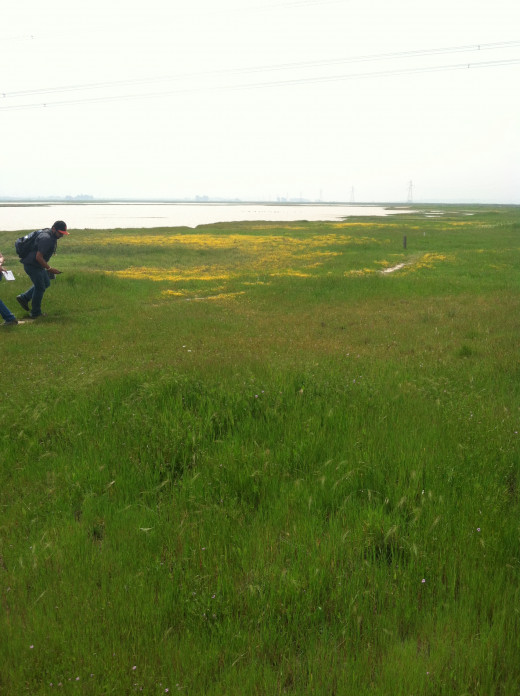
Vernal Pool
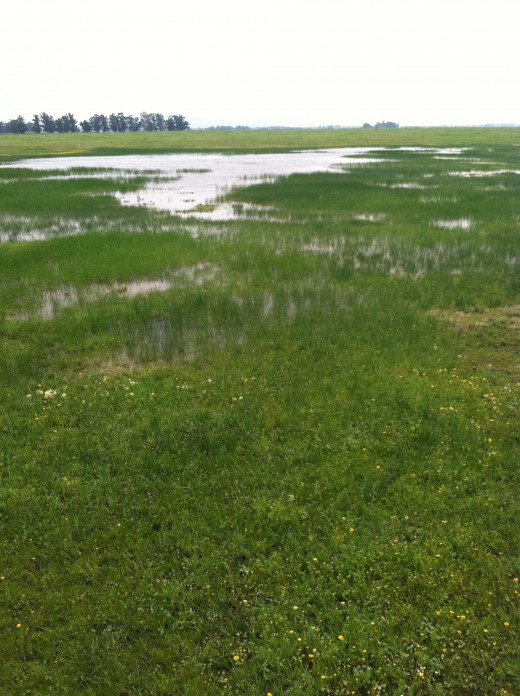
Field Owls Clover
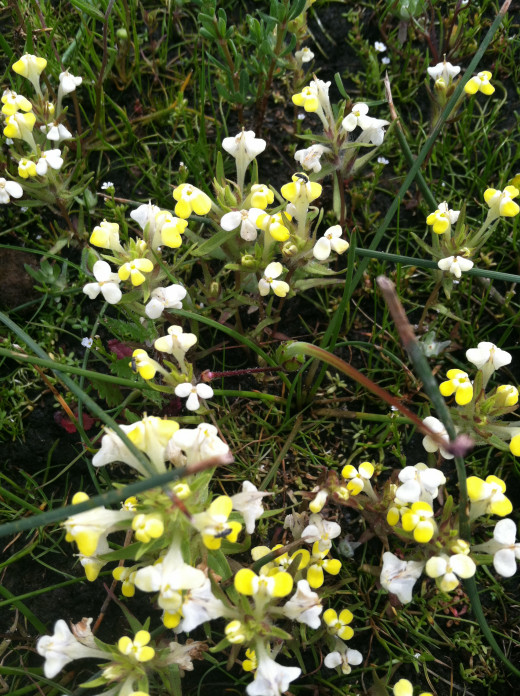
Olcott Lake
Vernal pools come in a variety of sizes and Olcott Lake is a giant vernal pool. In terms of sizing vernal pools any vernal pool that is greater than an acre is referred to as a Playa Lake (4.) Olcott Lake is roughly 93 acres, and shrinks and swells with the weather. Olcott Lake is a critically important fixture at Jepson Prairie. Within its waters are numerous organisms, that are endangered.
Vernal Pool Fairy Shrimp:
Vernal pool fairy shrimp, Branchinecta lynchi are classified as threatened, and they are protected by federal law wherever they are found. They are known to exist in both California with very limited locations within Oregon (5.) these are small creatures usually less than 1.5 inches. They swim upside down and have a range of colors. The color of the shrimp is dependent upon what it eats. Because vernal pools are usually small, and resources are limited, it is quite common to see the shrimp in one pool to be all the same color. They are often different in color than that shrimp in the next pool. These are an example of adaptation. The female fairy shrimp have evolved to deal with the changing conditions in which they live. They lay thin-shelled eggs in summer and thicker shelled eggs for winter (6.) They also produce summer eggs if the community of shrimp is short on males. Summer eggs are quick to hatch. Winter eggs filter into the mud and remain there during the dry phase of the vernal pool. They will hatch in the spring and begin the cycle again.
Other federally listed organisms include the delta green beetle. This is the only location where the beetle is known to exist. The life within the playa lake is tenuous. Vernal pools go through four stages each year. They are dry for most of the year. Life begins anew when the rains come and the pools begin to get wet. This is the wetting stage. As the rain continues, the pools enter aquatic stage where there is plenty of water for an extended period. As spring turns to summer, they water in the pools begins to evaporate. This is the drying phase and is often when the ground is still saturated, but the water level is dropping. The last phase is the dry phase where the ground becomes hard and time ebbs on until fall.
Mixed flowers
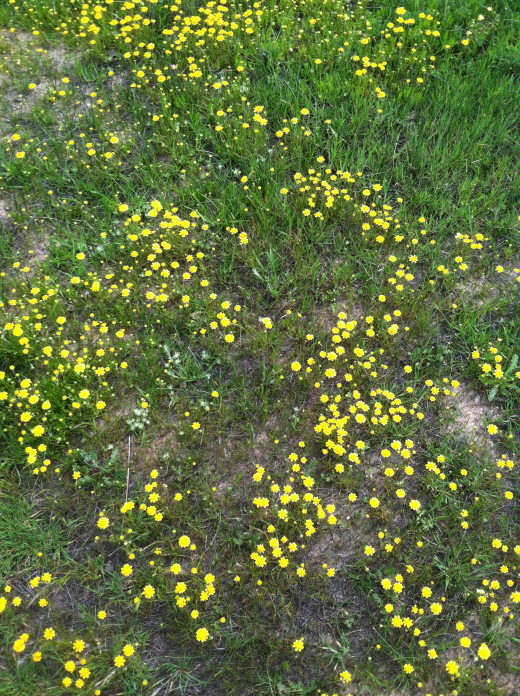
Brass Buttons - Cotula coronopifolia
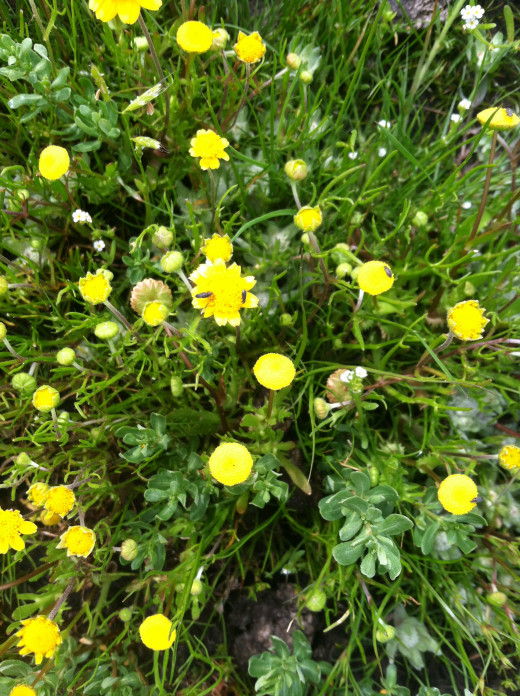
The Magic of Vernal Pools
Vernal pools are of great interest to me. My fascination with them is in the life cycle of the inhabitants. There is a dance that happens each year. The steps are complex, and the results are stunning. When you understand the cycle of vernal pools, you can begin to see that they take on an air of incredibleness that is almost science fiction in nature.
We live on a planet that has a 365 day year. The life cycle within a vernal pool is not only shorter it is remarkably quick. In Mediterranean climate, such as that of the central valley of California, the rainy season is from October through March. From March through October is our dry season. It is not often that we have much rain throughout the end of Spring, all of Summer, and the beginning of Autumn. When the water in vernal pools is gone, it is gone until the rains return. As we saw this past winter, the rains did not return until spring. The life, the organisms, plants and animals that live in a vernal pool must be able to deal with being dry for most of the year. That is part of what is magical about vernal pools. These organisms live their entire life in a very short time and yet they return each year to repeat the process. They have adapted to living in totally aquatic conditions and surviving without water for 6-9 months out of the year. The dance that occurs begins with the patter of rain. The middle is full of color and splendor, and then while we are enjoying the summer, and the dryness has come to the pools, these organisms reproduce and die. Their offspring return with the rains and the dance begins anew.
Wooly marbles - Psilocarphus brevissimus

In closing
I highly recommend a visit to Jepson Prairie. As I was looking through my photographs I realized how much yellow there was there. It is not always thus. What you get to see is very dependent upon when you go. There are plenty of purple, white, and pink flowers. There are also docent-led guided tours that are highly beneficial and educational. For the current tour schedule contact volunteers@solanolandtrust.org Tours begin at 10 am and run mid-March through early May. There is also a self-guided tour that is pleasant and there is plenty you can learn with a hand lens and a field guide book.
Citations and Resources:
2. EPA - Vernal Pools pp 1.
3. UC Merced Soil Land reform Relationship PP 19.
4. Solano Land Trust - Jepson Prairie Preserve3 Paragraph.
5. US Fish and Wildlife Services - Fairy Shrimp
6. Vernal Pool Life - Fairy Shrimp
About the Author
For the past five years, David has worked as a freelance content writer. He produces article and blog posts for multiple clients. Over the last half decade, he as produced thousands of documents for clients. He writes on a vast number of topics and across many industries. To view David's writing profile, just follow the link.
